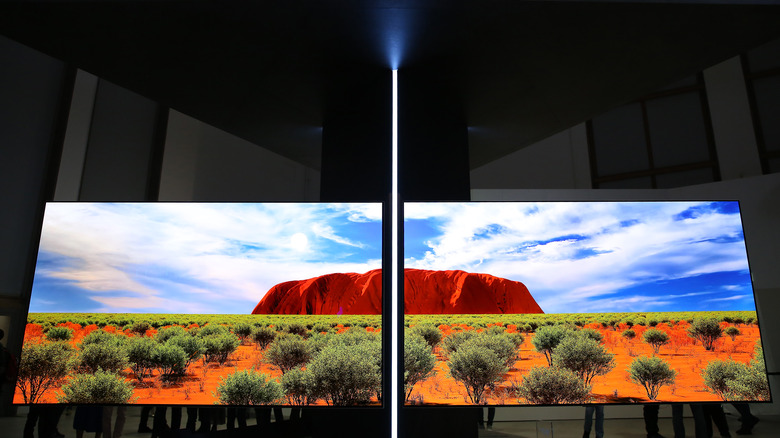LED Vs. OLED: Which Is Better For The Money?
Shopping for a TV has become increasingly difficult for the average consumer. Previously, they only had to worry about its size. Now, however, they need to consider the size, refresh rate, resolution, and the difference between LED and OLED. Anyone looking for the best TV to fit their needs essentially has to be a tech enthusiast. So, what's the difference, and which one should you go with?
The biggest difference is that the LED (Light Emitting Diodes) in LED TV merely refers to the backlight that allows viewers to see the picture on their TV. LED displays don't project or create the image people watch. Instead, they work in conjunction with a transparent LCD panel in a kind of symbiotic partnership because LCD panels don't project their own light. The two need each other.
OLED (Organic Light Emitting Diodes) TVs, on the other hand, create the image and emit light to project it to the audience. There's not a separate backlight, which allows them to be thinner than other TVs on the market. However, this kind of technology comes at a premium. One can look to customer satisfaction ranking choices for a TV, but there are more prudent methods.
How do you choose?
Choosing between LED or OLED TVs these days really comes down to the kind of budget a person has. OLED TVs are more expensive, but the picture quality is fantastic. People who want a real cinematic experience are going to get that from an OLED TV. LG has six OLED TVs for 2024 that really stand out to enthusiasts. However, people who don't care as much about the deepest blacks or the most vibrant colors will likely settle for an LED TV.
Since an OLED display illuminates the screen and creates the picture, they get some of the deepest blacks a TV can get by simply turning off pixels. OLED TVs might achieve fantastic picture quality, but they don't achieve the same level of brightness as LED displays. In fact, if a viewer has their OLED TV at its maximum brightness, it not only makes it harder for the pixels to turn black when they need to, but it also shortens their lifespan. If you are ever worried about a TV's lifespan, there are some signs that it's on its last leg.
When it comes to larger TVs, LEDs have a more favorable price tag. OLEDs are fantastic and highly advanced, but their technological superiority makes them more expensive. Consumers can find a 65-inch LED TV for anywhere around $600 – $900, while the same-sized OLED screen can cost anywhere from $1,400 – $1700. It's a drastic price difference that prices many out, making owning an OLED TV an exclusive club to those that can afford it.

